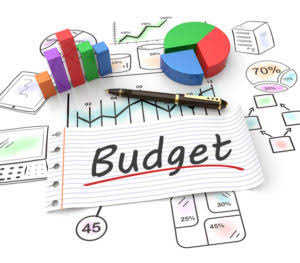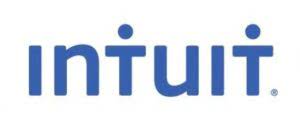
For example, a well-designed chart of accounts makes it easy for bookkeepers and accountants to figure out which financial transactions should be recorded into which general ledger account. Although most accounting software packages like Quickbooks come with a standard or default list of accounts, bookkeepers can set up and customize their account structure to fit their business and industry. The chart of accounts is a list of every account in the general ledger of an accounting system. Unlike a trial balance that only lists accounts that are active or have balances at the end of the period, the chart lists all of the accounts in the system. It doesn’t include any other information about each account like balances, debits, and credits like a trial balance does. Having a Chart of Accounts allows businesses to easily track their financial transactions, generate meaningful financial reports, and maintain compliance with applicable regulations.

What are the components of a standard chart of accounts?
These are used to generate the balance sheet, which conveys the business’s financial health at that point in time and whether or not it owes money. Revenue and expense accounts are listed next and make up the income statement, which provides insight into a business’s profitability over time. While the chart of accounts can be similar across businesses in similar industries, you should create a chart of accounts that is unique to your individual business.
- The accounts in the list provide the basic structure for an organization’s financial statements and GL.
- This level of detail helps with finer control over financial data and more precise tracking and reporting.
- The Chart of Accounts (COA) is essentially a listing of all account titles that a business may use to record transactions in an organized way.
- Separating gains and losses allows businesses to analyze the impact of these non-operating activities separately from core business operations.
- Shaun Conrad is a Certified Public Accountant and CPA exam expert with a passion for teaching.
business decisions?
The COA is tailored to an organization’s needs and can vary widely in complexity. Understanding the chart of accounts (COA) is important for anyone involved in business finances. It’s the backbone of a company’s financial record-keeping system that must be observed and maintained with the utmost care. COA empowers you to make smart financial decisions based on clear, organized information. Each of the accounts in the chart of accounts corresponds to the two main financial statements, i.e., the balance sheet and income statement. Accounts may also be assigned a unique account number by which the account can be identified.
- Retained earnings represent the accumulated net income that has not been distributed as dividends to the shareholders.
- For example, comparing current assets and current liabilities can help determine a company’s liquidity, or its ability to cover short-term obligations.
- The specific accounts and their numbering may vary by company, industry, or specific accounting standards adopted.
- It brought the concept of recording transactions with corresponding debits and credits, allowing for more accurate financial records.
- If you start off with only a handful of accounts and then keep expanding the list as your business grows, it may become increasingly challenging to compare financial results against the previous years.
- Your chart of accounts helps you understand the past and look toward the future.
Anatomy of a COA
In her spare time, Kristen enjoys camping, hiking, and road tripping with her husband and two children. The firm offers bookkeeping and accounting services for business and personal needs, as well as ERP consulting and audit assistance. To make it easy for readers to locate specific accounts or to know what they’re looking at instantly, each COA typically contains identification codes, names, and brief descriptions for accounts.

Instead of lumping all your income into one account, assess your various profitable activities and sort them by income type. Traditionally, each account in the COA is numbered, and accountants can quickly identify its type by the first digit. For example, asset accounts for larger businesses are generally numbered 1000 to 1999 (or 100 to 199), and liabilities are generally numbered 2000 to 2999 (or 200 to 299). Small businesses with fewer than 250 accounts might have a different numbering system. QuickBooks Online automatically sets up a chart of accounts for you based on your business entity with the option to customise it as needed.
Resources for YourGrowing Business

The structure of the chart of accounts makes it easier to locate specific accounts, facilitates consistent posting of journal entries, and enables efficient management of financial information over time. This numbering system helps bookkeepers and accountants keep track of accounts along with what category they belong two. For instance, if an account’s name or description is ambiguous, the bookkeeper can simply look at the prefix to know exactly what it is. An account might simply be named “insurance offset.” What does that mean? The bookkeeper would be able to tell the difference by the account number. An asset would have the prefix of 1 and an expense would have a prefix of 5.
That means that balance sheet accounts are listed first and are followed by accounts in the income statement. A chart of accounts examples (COA) is an index of all of the financial accounts in a company’s general ledger. In short, it is an organizational tool that lists by category and line item all of the financial transactions that a company conducted during a specific accounting period. The chart of accounts is important in offering a clear and transparent view of a company’s financial health to interested parties, such as investors and shareholders. This comprehensive listing of accounts in the general ledger allows for easy organization of finances. A general ledger represents the record-keeping system for a company’s financial data with debit and credit account records validated by a trial balance.
Best Free Accounting Software for Small Businesses of 2024

While in most jurisdictions and industries it is entirely up to each entity to design the chart of accounts according to its specific requirements, others provide general guidelines or are even regulated by law. Even for a small business, however, more digits allow the flexibility to add new accounts as the business grows in the future, while maintaining the logical order of the coding system. Essentially, if you placed the statements of financial position and performance on top of each other, you would come up with the chart of accounts. Changes – It’s inevitable that you will need to add accounts to your chart in the future, but don’t drastically change the numbering structure and total number of accounts in the future. A big change will make it difficult to compare accounting record between these years. For information pertaining to the registration status of 11 Financial, please contact the state securities regulators for those states in which 11 Financial maintains a registration filing.
#2 – A production (manufacturing) company
The complete Swedish BAS standard chart of about 1250 accounts is also available in English and German texts in a printed publication from the non-profit branch BAS organisation. The Spanish generally accepted accounting principles chart of accounts layout is used in Spain. The French generally accepted accounting principles chart of accounts layout is used in France, Belgium, Spain and many francophone countries. The use of the French GAAP chart of accounts layout (but not the detailed accounts) is stated in French law.
